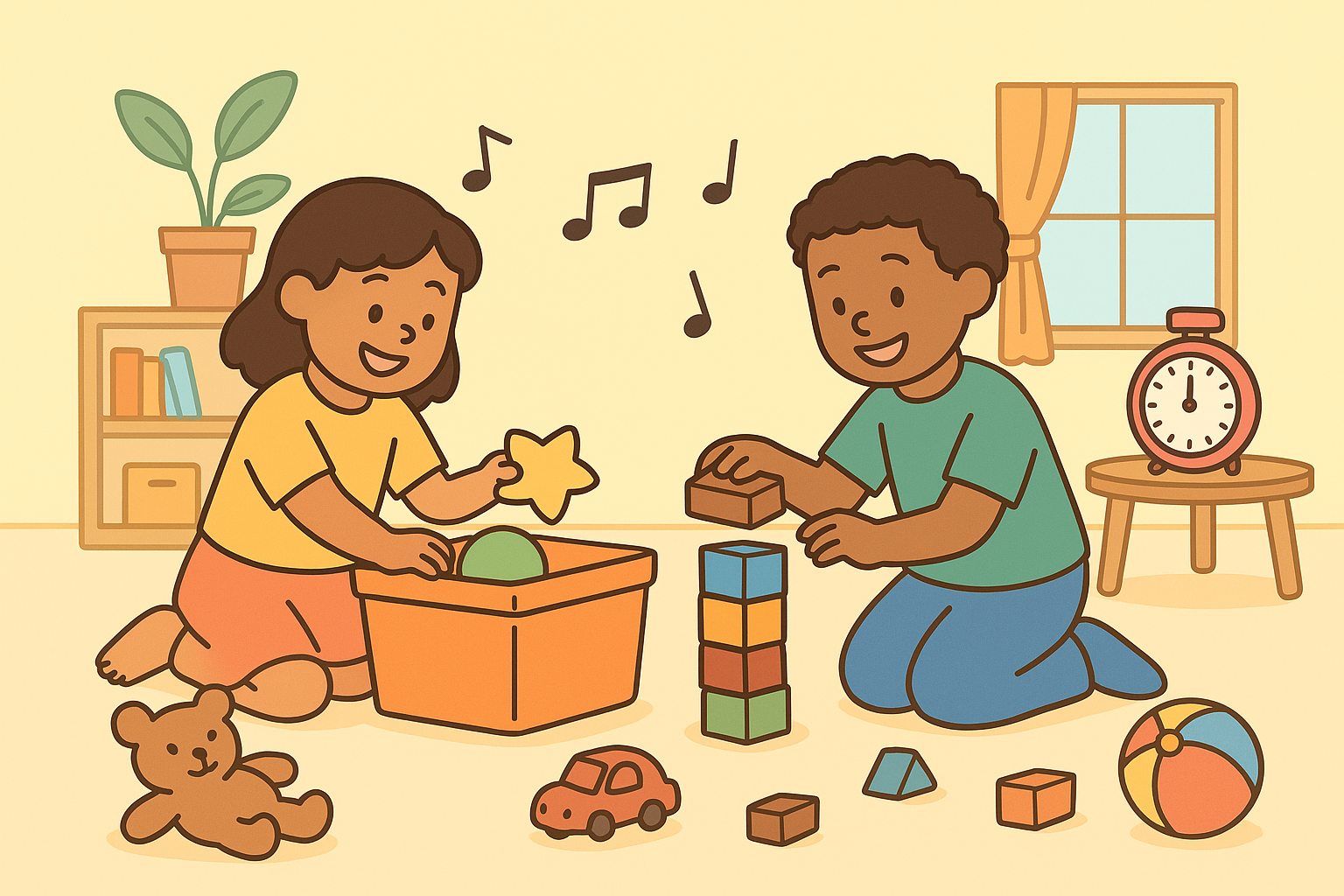How to Make Cleanup Time Feel Like Play
How to Make Cleanup Time Feel Like Play
Few words make parents sigh like “cleanup time.” Toys everywhere, reluctant helpers, and the eternal “but I didn’t make the mess!”
But cleanup doesn’t have to be a battle. When you make it playful, kids start to see it as part of the fun — not what comes after it.
The secret? Keep cleanup short, structured, and joyful — like a mini game instead of a chore.
Why Kids Resist Cleaning
For children, play feels infinite — they live in the moment, not the aftermath. To them, stopping to clean up feels like the fun is ending, not continuing.
💡 Fuzzigram tip: Reframe cleanup as a transition, not a punishment. “Let’s reset the room together so we can play again later.”
You might also enjoy Creating Family Chore Routines That Actually Stick.
Step 1: Set a Clear, Fun Cue
Announce cleanup with playful energy — not stress.
“Five-minute tidy-up challenge!”
“Let’s see if we can beat the music!”
“Who can find the most blue toys?”
💡 Fuzzigram tip: Children follow tone over words. When cleanup sounds fun, resistance drops immediately.
Step 2: Use Music and Movement
Turn cleaning into a dance break. Create a “cleanup playlist” — upbeat, familiar songs that last 3–5 minutes.
When the song ends, so does cleanup time. This gives a clear start and finish (and keeps you from cleaning for 30 minutes straight).
💡 Fuzzigram tip: A timer plus music makes cleanup predictable and achievable.
You can cross-link to Quiet Time Activities to Transition from Busy to Bedtime.
Step 3: Make It a Game
Gamify cleaning to shift the focus from “work” to “play.” Try these simple ideas:
Color Hunt: Pick up all the red things first.
Category Sort: “Find everything that’s soft!”
Toy Race: Race to fill baskets before the timer dings.
Cleanup Detective: Pretend you’re “solving the case” of the missing toys.
💡 Fuzzigram tip: Creativity fuels cooperation. If it’s fun, they’ll join in faster.
Step 4: Simplify the System
Too many bins or rules make cleanup confusing. Stick to broad, easy categories — blocks, dolls, art, books.
💡 Fuzzigram tip: Label bins with both words and pictures so kids can match toys independently.
Step 5: Assign “Helper Roles”
Make cleanup feel important by assigning small leadership jobs:
The Floor Finder picks up large toys.
The Shelf Organizer lines up books.
The Lid Closer finishes the task with a flourish.
💡 Fuzzigram tip: Titles turn responsibility into pride.
You might also like Helping Kids Become Independent in Their Morning Routine.
Step 6: Celebrate the Finish
When cleanup’s done, take a moment to appreciate it together.
“Look how nice your play area looks!”
“We finished before the song ended — high five!”
💡 Fuzzigram tip: Kids are more likely to repeat a task when it ends with praise and connection.
Step 7: Keep It Short and Predictable
Five to ten minutes is ideal. Beyond that, kids lose motivation. The more consistent cleanup time becomes, the less resistance builds.
💡 Fuzzigram tip: Tiny tidies beat big overhauls every time.
Cleanup time doesn’t have to break the mood — it can extend it.
When kids learn that cleaning up is part of play, not punishment, they start to take ownership of their space — and pride in keeping it ready for the next adventure.
Because family routines work best when they feel like teamwork, not chores.
This content is for educational purposes and is not a substitute for professional medical or psychological advice.
Popular Parenting Articles


